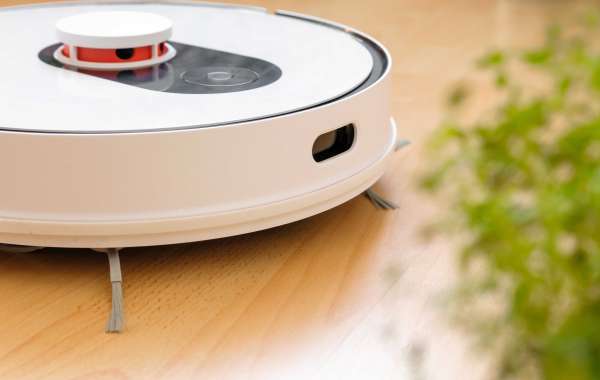How to Take Care of a Robot Mop and Vacuum
A robot vacuum and mop will make cleaning easier. They also require regular maintenance such as emptying the dustbins, cleaning the disposable cleaning pads in accordance with the manufacturer's instructions or removing the single-use ones and keeping the sensors cleaned.
Check out mapping features to avoid making repeated traverses of the same area and app integration to create schedules, modify power settings and modes, and save maps of your home.
1. Empty the Dirt Bin
The majority of robot vacuum cleaners require regular maintenance, including emptying the dirt bins, washing pads, and keeping track of replacement consumables. The better you maintain these parts, the longer they will last. Some cleaning robots also need some extra attention particularly those with water tanks.
First, empty the dustbin completely after each cleaning session. This is a simple task but it is essential to the performance of your robot. It is also important to clean your filter periodically. Consult your user manual to determine the best method and when you should clean the filters.
While the mopping function on your robot may eliminate a lot of dust off your flooring, there are a number of small particles that can accumulate in cracks and gaps on flooring. These include hair and dandruff particles, mites and dirt, and pet hair. It is essential to use a vacuum or sweeper on occasion to clean these areas to prevent these particles from causing health issues.
If you are planning to use your robotic mop, then it's essential to select one with high-quality machine and large dust and water tanks. LEGEE for instance, has one of the largest dust bins and water tanks among its peers so you don't have to stop cleaning or interrupt your robot mop to refill the tank.
Do not put floor cleaners or vinegar into the water tank of your robot mop, unless you have been directed to do this by its manufacturer. These substances can damage your robot and void the warranty.
A robot vacuum and mop is a great way to free up your time so you can focus on more pressing matters such as your family or work. Some stains and dirt are too difficult for the robot to deal with. You should also employ a traditional vacuum cleaner to clean the areas that your robot cannot reach.
2. The Cleaning Pads
Depending on the purpose you use the mop from your robot, the pads may get dirty or even stained. It is crucial to clean your cleaning pads regularly. You can wash them either by hand or in the washing machine along with your regular laundry. Avoid using fabric softeners or dryer sheets since they will reduce the absorbency of the pad and could cause it to not work properly.
If your robot mop is also a vacuum cleaner, you will need to empty and clean its dust bin on a regular basis. The same is true for hybrid models that combine sweep and vacuum with dry mop pads. Many robot mops also come with brush attachments that require to be cleaned.
You should always rinse the mop pads well to remove all dirt and grime. You can also soak them in warm water for several minutes to break loose any dirt that's stuck. Once they're clean then you can either let them dry in the air or use a low heat setting in the dryer. It is recommended that you clean your pads every 2 to 3 months.
During the cleaning process the mop or vacuum is often able to collect small particles which can cause damage to your robot's sensors and other components. You can prevent this by wiping your sensors clean with a microfiber cloth every now and again. This will allow the robot to navigate its motion through the room without hitting furniture and walls.
Sensors at the bottom of the majority of robot vacuums and mop are used to detect obstacles, ensuring that the machine doesn't get stuck in tight spaces. You'll need to clean them frequently as they are prone to getting clogged up with dust and other particles.
Certain robot vacuums come with self-cleaning features that you can utilize after every use. You can go to the site of the manufacturer to find out if this feature is available on the model you have. Typically, it takes approximately two or three minutes to complete this cycle and is available through an app or a button on the robot itself. This cycle should be run often using a vacuum or mop to maintain the performance of sensors and other components.
3. Clean the Charging Station
Most robot mops spray water or cleaning solution directly onto the floor to soften staining and then scrub them off using scrub pads. Some robot mops use disposable mop pad, while others can be cleaned and reused. Whether you choose disposable or reusable mop pads, it's essential to empty them and wash them between cleaning sessions according to the instructions of the manufacturer. Also, drain and let the docking station or mop base dry between uses to prevent mildew.
Robotic mops, just like vacuum cleaners, require regular maintenance to ensure that they function smoothly. This includes emptying and cleaning the dust bins and cleaning the sensors. If your mop robot is equipped with dirt detectors it is possible to wipe it down gently every couple of cycles to remove dust. This can cause the sensors to become blocked, leading to problems with navigation.
Many robot mop models come with an app that lets you to save maps of your house, set up cleaning schedules and monitor when the machine requires maintenance. If you are planning to purchase a mop, look for one that is connected to Wi-Fi, so you can use the app to control it from any location.
A top-rated model, the Samsung Powerbot Vac + Mop is a smart device with features that let it clean floors, without needing to be present. The map function allows you to create virtual barriers and no-go zones for the robot, and also manually direct it to clean an specific part of the room. Its vacuuming and mopping capabilities are able to work on carpeting and hard floors, making it an ideal choice for homes that have both.
Other smart features on this 2-in-1 robot are an object avoidance sensor that helps it navigate around furniture and other objects, as well as an auto-emptying trash bin that reduces the amount of clean-up needed after every use. It can also be programmed to run while you're away which is ideal for busy homeowners. And it's quieter than most other vacuums, which can be a benefit for those who live with noise-sensitive children or pets.
4. Clean the Sensors
The majority of robot vacuums as well as mop-and-vacuum combo models have an app that lets you create automated cleaning schedules, set cleaning modes and monitor when the device requires maintenance. You can also utilize the app to begin cleaning, stop, and manually clean your robot from any place in your home, as well as alter the settings of the device.
The app is especially useful if the robotic vacuum has mapping capabilities, like cameras, lasers, or optical dToF. This lets it save an image of the room, and navigate through furniture. These features can decrease the chance of staining recurring on your floor and make your cleaning chores less time-consuming.
If the mapping sensor of your robot is dirty, it will have trouble navigating around your home. Cleaning them is essential as is cleaning a smartphone's screen or camera lens. The best way to do this is using a clean, dry cloth. If you use a moist cloth or cleaner, you could harm the sensors which could cause them to malfunction.
It's also an excellent idea to clean your robot vacuum brushes frequently. This will stop hair tangles from forming and clogging up the motor and make it easier for your robot to pick up particles. It is also a good idea to clean the primary roller brush, as it is usually responsible for picking up dirt and will accumulate an enormous amount of dust over the course of time.
Last but not least, only use cleaners that are recommended by the manufacturer of the robot. Other floor cleaners could damage your robot and could void its warranty. Most brands suggest using a mixture of vinegar and water or a cleaning robot mop and vacuum solution that is designed specifically for their robot. Never pour in hot water or a solution that contains abrasives because they can harm the internal components and leave an unpleasant residue on your floors. If you have any questions, consult your owner's manual for specific instructions on how to clean your robot cleaner. This will ensure that it works properly and lasts a longer time.








